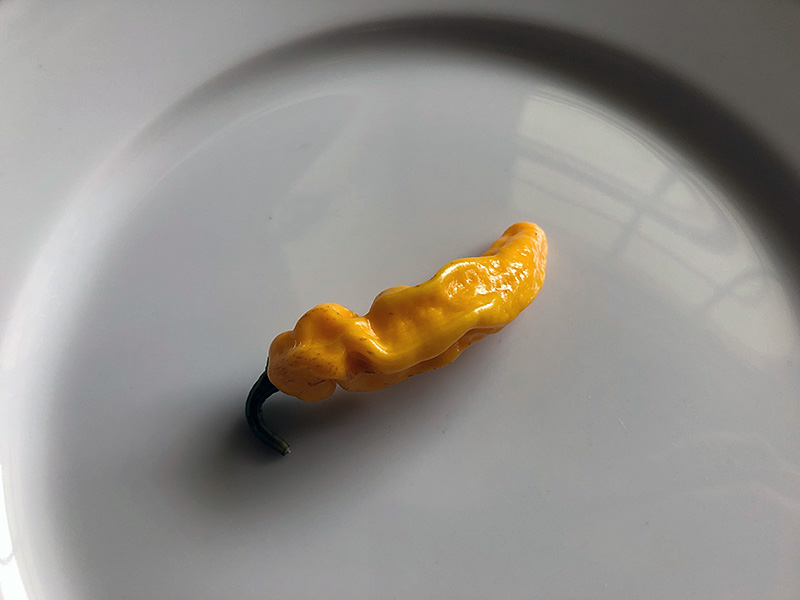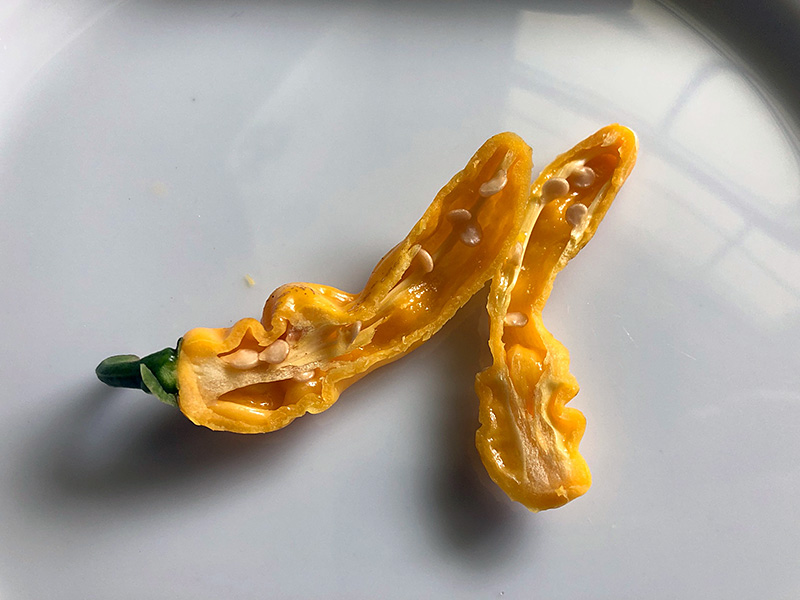Mako Akokosrade Pepper Review
The Mako Akokosrade pepper is originally from Ghana and may be the first variety from the African continent that I have grown – or even encountered, really. This particular plant resides in a 13 gallon pot and is of a fairly small stature. It stands roughly two feet tall and just under that in diameter.
Thus far this season, I have only picked a handful of ripe peppers from the plant. Each fruit has been consistent in size and appearance, their yellow wrinkled skin the distinctive feature among my plants. They sort of remind me of the Yellow Murupi I grew last year, but on a smaller scale and with less dramatic twists and turns.

Once cut open, the Mako Akokosrade is clean with a small cluster of seeds and placenta at the stem. The aroma that wafts from the pepper is lightly fruity and floral, embracing a Habanero-like character. Chewing into the soft flesh of the fruit, the flavors nearly mirror the aroma. There is a lightly perfumey floral trait, a touch of bitterness and distant fruit notes. A twinge of sweetness presents itself initially, but is quickly overwhelmed. Thankfully, the flowery and bitter flavors fade quickly, leaving behind a light fruitiness and the heat.

The heat builds swiftly to a decent tongue burn that peaks at a mid-habanero level with a stinging nature. The burn eventually spreads across the entirety of the tongue – sides, underneath – eventually hitting the throat gently. The plateau is long with this one as the heat sits there for a bit before eventually fading.
It’s not secrete, if you read enough of the reviews here, that I’m not a huge fan of overly floral flavor profiles in peppers. Lucky for me, the initial burst of perfumey flowers dissipates quickly. The Mako Akokosrade has a good level of heat that would do nicely as a “generic” addition to any sauce recipe or perhaps, even cooked into a spicy dish. I’m not sure that the flavors are unique enough to stand out on their own, but as an additive, this one should do just fine.